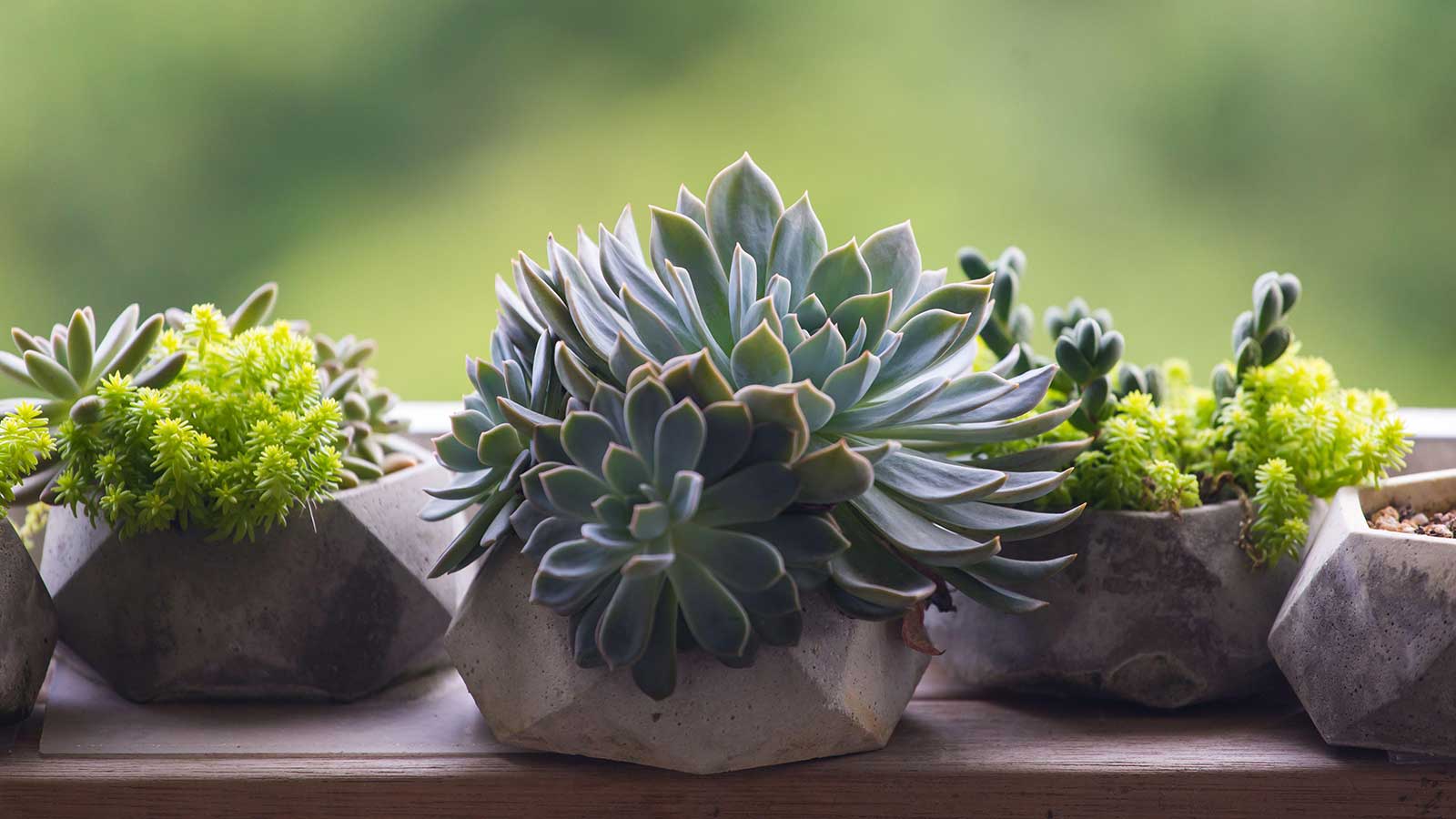How to prune succulents – top tips for cutting back trailing, leggy and damaged plants
Keep your houseplants looking their best with this easy pruning advice


Whether you have one or two succulents or an entire collection, these plants look fantastic in contemporary interior schemes. There are all sorts of interesting varieties available, from majestic jade plants and statement snake plants to rosette-forming specimens, such as echeveria.
Aside from their beauty, succulents are super easy to look after. They store water in their fleshy leaves, which means you won't need to hydrate them often. Pruning also isn't essential for most, however, there are occasions where it can be beneficial for keeping them looking their best.

Many succulents have intricate forms
3 reasons for pruning succulents – and how to do it
Keep these tips in mind when caring for these pretty and low-maintenance indoor plants.

Aloes can grow into large, striking plants
Pruning leggy succulents
Some succulents, including crassula, aeoniums, and kalanchoe, can grow leggy in low-lighting conditions. A prune can encourage them to branch out into a more compact and bushy shape.
For instance, gardening expert John Negus recommends shortening a leggy aeonium by half in spring (when it's in its growing season). The plant should respond by developing side shoots, which will minimize the risk of it becoming top-heavy and falling, he says. 'Ideally, make a clean cut just above a leaf joint. When new growth is obvious, feed it weekly with a high-potash tomato fertilizer to encourage luxuriant growth.'
Top tip: You can propagate the succulent cuttings that you removed to grow new plants for free.

John has been a garden journalist for over 50 years and regularly answers readers' questions in Amateur Gardening magazine. He has also written four books and has delivered many talks over the years on horticulture.

Leggy jade plants can be pruned
Pruning trailing succulents
Trailing succulents, such as string of pearls, are perfect additions to a high shelf. But if they're looking a little too lanky in their surroundings, a trim may be in order. As with pruning leggy succulents, carry out the procedure during the growing season of spring or early summer.
Design expertise in your inbox – from inspiring decorating ideas and beautiful celebrity homes to practical gardening advice and shopping round-ups.
'Make the cut slightly above a leaf node or a healthy stem segment to shorten the stems to the desired length,' advises Aaditya Bhatta, the founder and editor of Plants Craze. 'New growth will be stimulated by this.
'Avoid over-pruning, which would be a succulent mistake and can make a plant look sparse, and handle delicate trailing succulents with care,' he adds.

Aaditya Bhatta is the Founder and Editor of Plants Craze, a website that offers tips and tricks on gardening and plant care. He has been a plant enthusiast and plant parent for over a decade.

String of pearls is a popular trailing succulent
Pruning damaged succulents
Dead, wilted, or discolored leaves are telltale signs of a dying snake plant or other struggling succulent. Alongside taking the steps needed for better growing conditions, damaged foliage can be removed to improve the overall look of the plant. This can be done at any time of the year.
With most succulents, you can simply remove each affected leaf either at the base of the plant (for snake plants and aloes) or by making a clean cut just above the next healthy leaf along the stem.
For rosette-forming plants, you can either cut the leaves at the base or gently twist them away. 'Be careful not to harm the rosette by removing too many leaves at once or cutting too near to the center,' says Aaditya.

Individual leaves can be carefully removed from a rosette-forming succulent if needed
FAQs
What are some common mistakes to avoid when pruning succulents?
Always use clean and sharp equipment, as Aaditya Bhatta of Plants Craze highlights. This will help to prevent spreading plant infections.
Aaditya also advises against pruning too heavily, which may harm the plants. 'When in doubt, it's preferable to under-prune and then watch how your succulent reacts before making additional cuts.'
Once you've pruned your succulent, avoid exposing the cut regions to moisture, he continues. Instead, wait for them to callus over first. If you're replanting the cuttings into soil to propagate, wait for calluses to develop on them, too. This lessens the risk of them developing rot.
What are the best tools to use for pruning succulents?
Use a pair of clean, sharp scissors or pruners to prune your succulents. A pair of pruning snips, such as Fiskars Micro-Tip Pruning Snips from Amazon, can be useful for smaller, more delicate plants.
As mentioned above, damaged leaves of rosette-forming succulents can sometimes be removed by hand, using a twisting motion. Droopy aloe leaves that have wilted at the base can often be removed in this way, too.
Aside from pruning your succulents properly, be sure to get the know-how on repotting succulents for when the time is right. Learning how to water succulents is essential, too – overdoing it could be fatal to your precious plants.

Holly started writing about gardening five years ago, and she is a regular contributor to Homes & Gardens. She has also written many gardening features for Woman & Home and Real Homes, too. She has previous experience as a professional gardener, where she helped to plant and maintain private gardens. Holly has also looked after allotment plots over the years and loves to grow her own flowers and veggies from seed. In her spare time, she enjoys visiting local gardens, botanical drawing, and tending to her ever-growing collection of houseplants.